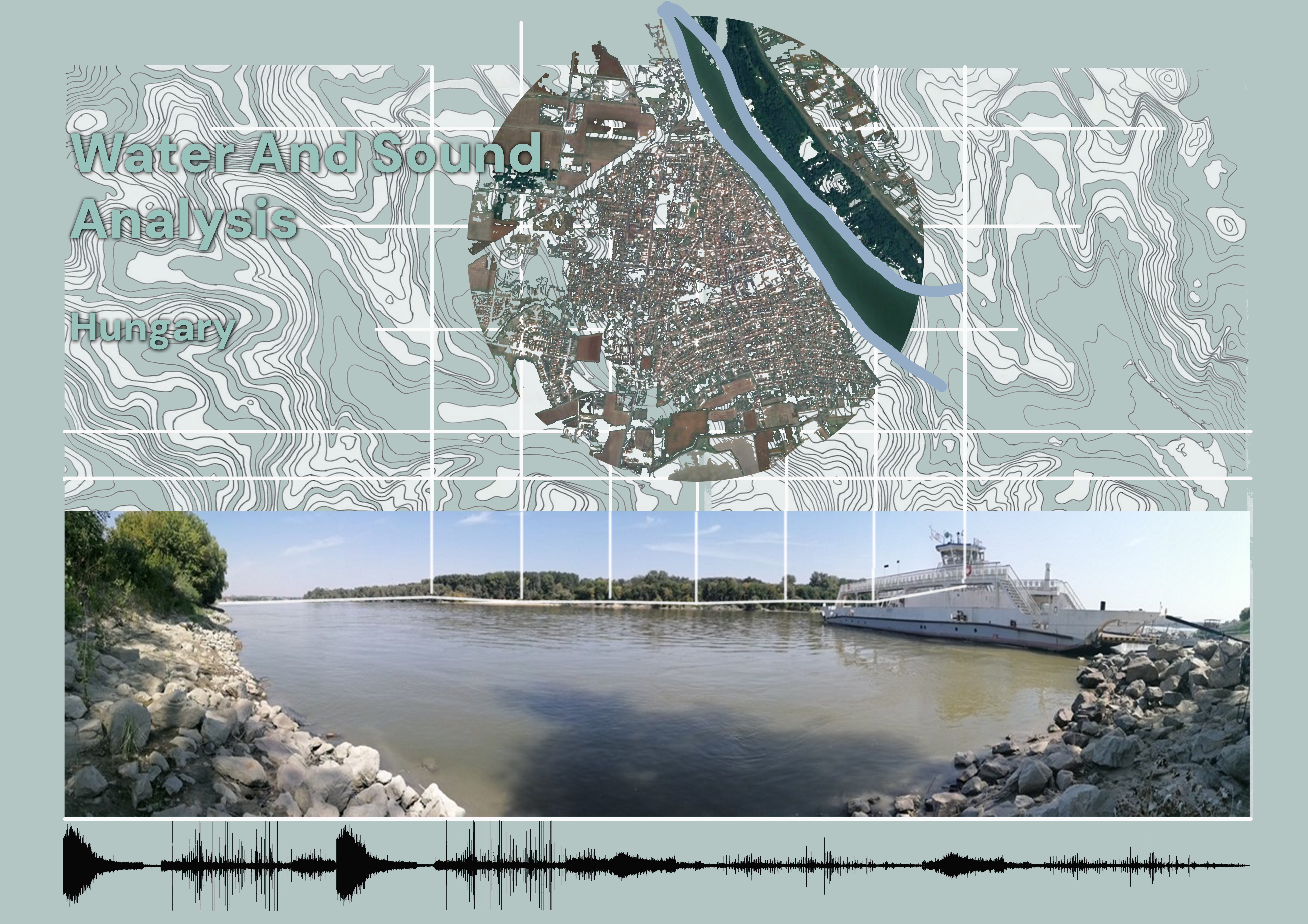Sound and Water Analysis
Right Shore of the River, Mohács, Hungary

Sound Analysis
Date: 04.09.2024
Time: 11.00 am
Atmospheric Situation:
Step into a radiant setting where the weather is at its finest. The perfect combination of warmth and calm makes this atmosphere irresistibly inviting:
-
- Golden Radiance: The sun beams brightly, filling the air with light and energy.
- Cozy Warmth: A gentle, comforting heat wraps the surroundings, enhancing the day’s charm.
- Serene Stillness: With no wind to ruffle the peace, the environment feels calm and undisturbed.
Water Analysis

The water quality in Mohács, at the sampling point „Right shore of the river – P1,“ shows a generally healthy status, with several water quality parameters meeting the required regulatory limits for surface water, suggesting a favorable aquatic environment for both organisms and local human populations.
Parameters such as temperature (26.2°C), salinity (349 ppm), pH (8.35), and dissolved oxygen (9.1 mg-O2/L) all fall within the acceptable limits for water bodies, indicating a stable and balanced ecosystem. Nitrates (1.4 mg-N/L) and nitrites (0.007 mg-N/L) are significantly below the regulatory thresholds, reducing the potential for eutrophication and minimizing risks to water quality.
The ammonium concentration (<0.08 mg-N/L) is also well within the regulatory limits, further supporting the overall health of the water. Total phosphorus is below 0.04 mg-P/L, aligning with the EU WFD standards, preventing nutrient over-enrichment and the associated risks of algal blooms. Furthermore, essential minerals such as sodium (11.1 mg/L), BOD5 (0.8 mg-O2/L), potassium (2.9 mg/L), calcium (49 mg/L), and magnesium (12.5 mg/L) conform to regulatory standards, ensuring a balanced mineral profile that supports both aquatic life and water quality.
However, several parameters in the sample exceed the regulatory limits, signaling potential contamination or pollution risks. The lead concentration (3 µg/L) surpasses the EU Drinking Water Directive limit of 0.25 µg/L, which could be harmful to aquatic organisms and indicate contamination from industrial or urban runoff. Cadmium (<0.1 µg/L) also exceeds the allowed limit of 0.05 µg/L set by the EQSD, suggesting possible industrial contamination. Copper levels (8.6 µg/L) exceed the WHO guideline of ≤ 1.0 mg/L, which is concerning due to the toxicity of copper, particularly to sensitive aquatic species.
Additionally, the total chromium concentration (3.9 µg/L) is well above the EQSD threshold of 0.5 µg/L, reflecting significant contamination from anthropogenic sources. Lastly, the total organic carbon (TOC) level (3.6 mg/L) surpasses the EU WFD limit of 2 mg/L, indicating higher organic pollution that could lead to oxygen depletion and negatively affect water quality. These exceedances suggest that localized pollution sources, possibly related to industrial or agricultural activities, may be affecting the water quality and require further monitoring and mitigation efforts.
Note: The concentration limits used in the analysis are based on regulatory standards for surface water and drinking water quality, as outlined in the EU Water Framework Directive (EU WFD) and the EU Drinking Water Directive. These limits ensure aquatic ecosystem health and public safety. The EU directives offer broader standards for surface and drinking water across Europe. Different sources were used to ensure comprehensive comparison and accuracy of the values analyzed.
References:
[1] European Commission. (2018). Directive 2000/60/EC of the European Parliament and of the Council establishing a framework for community action in the field of water policy (Water Framework Directive). Official Journal of the European Union, L 327/1. https://eur-lex.europa.eu
[2] European Union. (2008). Directive 2008/105/EC of the European Parliament and of the Council on environmental quality standards in the field of water policy (Environmental Quality Standards Directive). Official Journal of the European Union, L 348/84. https://eur-lex.europa.eu
[3] World Health Organization (WHO). (2017). Guidelines for drinking-water quality: Fourth edition incorporating the first addendum. WHO. https://www.who.int/water_sanitation_health/publications/dwq-guidelines-4th/en/
[4] European Union. (1998). Directive 98/83/EC on the quality of water intended for human consumption. Official Journal of the European Union, L 330, 32-54. https://eur-lex.europa.eu/legal-content/EN/TXT/?uri=CELEX%3A31998L0083
